Continued from Part I which is linked here.
THE TIME OF THE EXILE AND BEYOND
Beginning in the eighth century, and well down into the sixth century B.C.E., the nation of Israel suffered through political, social, and military catastrophes. First under the Assyrians, then successively under the Babylonians and Persians, large parts of the population were exiled and their land was occupied. This is the time of the Hebrew Prophets–whose books comprise Isaiah through Malachi. It is primarily in these texts–written before, during, and after this period of exile–that we find the beginnings of a new view of the future. It is this new view, in contrast to what I called the “historical” view above, that can properly be called “eschatological.” It seems to develop over time from a rather simple hope for the ultimate restoration of the national fortunes of the tribes of Israel to a fantastic vision of total cosmic renewal and transformation. This development is somewhat, though not strictly, chronological. The type and range of “eschatological” solutions proposed seem to correspond directly to the perception of the scope of the historical problem.
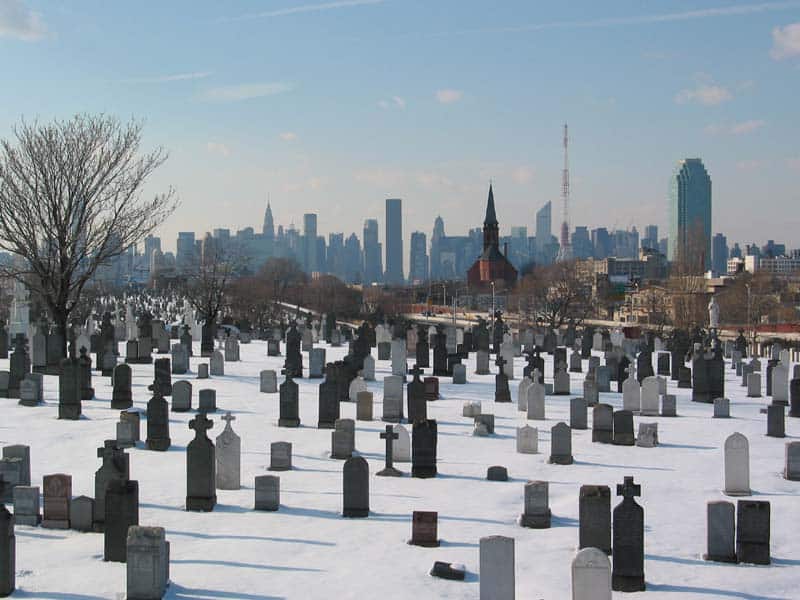
The Restoration of National Israel
One of the dominant and ubiquitous refrains of the Hebrew Prophets is that all twelve tribes of Israel will someday be gathered back to the land and, once fully restored, experience in an unprecedented measure all the blessings of their special relationship with Yahweh (Deut. 28 again). This picture of a “golden age” is sketched out over and over again in similar terms: All the tribes return to the land; they repent of their idolatry and sinful ways; the Davidic kingship is restored; peace and prosperity abound; and all the nations either submit to them or they are converted to Israel’s God.[6] This state of affairs apparently lasts indefinitely. To illustrate, I cite three quotations from Jeremiah:
At that time Jerusalem shall be called the throne of Yahweh, and all nations shall gather to it, to the presence of Yahweh in Jerusalem, and they shall no more stubbornly follow their own evil heart. In those days the house of Judah shall join the house of Israel [i.e., the twelve tribes reunited], and together they shall come from the land of the north [i.e., exile] to the land that I gave your fathers as an heritage ….
Behold the days are coming, says Yahweh, when I will raise up for David a righteous Branch, and he shall reign as king and deal wisely, and shall execute justice and righteousness in the land. in his days Judah will be saved, and Israel will dwell securely ….Behold the days are coming, says Yahweh, when I will make a new covenant with the house of Israel and the house of Judah …. I will put my laws within them, and I will write it upon their hearts; and I will be their God, and they shall be my people.., and I will remember their sin no more. (Jer. 3:17-18, 23:5-6, 31:31-34)
This final state of things, however “golden” and ideal, is still described in most of these texts in thoroughly “historical” terms. In other words, all the promises of national grandeur made anciently to Israel, which became utterly hopeless during the Exile, are grandly projected into the future. But the cosmos is still basically the same. Humans stay on earth. The normal cycles of nature continue. Generations still come and go, and the dead of past ages remain in Sheol, thoroughly “dead.”
A Transformed Cosmos
However, in a few texts, scattered here and there in the Hebrew Prophets, a dramatically different vision of the future begins to emerge. It is built around the view of a restored Israel, as described above, but it also sets forth the hope of an utterly transformed cosmos, extending from the heights of heaven to the depths of Sheol, and including all normal cycles of nature and human history. In other words, all that led the author of Ecclesiastes to cry out, “vanity of vanities, all is vanity,” will be reversed. Isaiah describes a time when even the violence of nature, “red in tooth and claw,” will end:
The wolf shall dwell with the lamb,
and the leopard shall lie down with the kid,
and the calf and the lion and the fatling together,
and a little child shall lead them.
The cow and the bear shall feed;
their young shall lie down together;
and the lion shall eat straw like the ox.
The sucking child shall play over the hole of the asp,
and the weaned child shall put his hand
on the adder’s den.
They shall not hurt or destroy in all my holy mountain;
for the earth shall be full of the knowledge of Yahweh
as the waters cover the sea. (Isa. 11:6-9)
This transformed state of things is so dramatic, it is like a new or second creation. A “new heavens and new earth,” Isaiah terms it (Isa. 65:17-25, 66:22-24). It is inaugurated by a highly idealized Davidic King (Isa. 11:1-5; Mic. 5:2-4).[7] Total peace reigns among all nations (Isa. 2:4; Mic. 4:3). The suffering and toils of life are eliminated as “Yahweh wipes away tears from all faces,” and death itself is “swallowed up forever” (Isa. 25:7-8). This apparently includes the “resurrection” of the righteous dead of the past (Isa. 26:19).[8] This era of complete justice and righteousness is ushered in by the terrible Day of Yahweh’s wrath in which all wicked sinners are utterly destroyed. [9] The topography of the land of Israel and the city of Jerusalem is drastically altered: The deserts bloom like a rose; fresh water flows into the Dead Sea; and the whole Jerusalem area is elevated (Isa. 35, Zech. 14:8-11, Ezek. 47-48). Some few texts seem to imply that wicked angelic powers are also disposed of in this overthrow of all evil by Yahweh (Isa. 24:21-22, 27:1). [10]
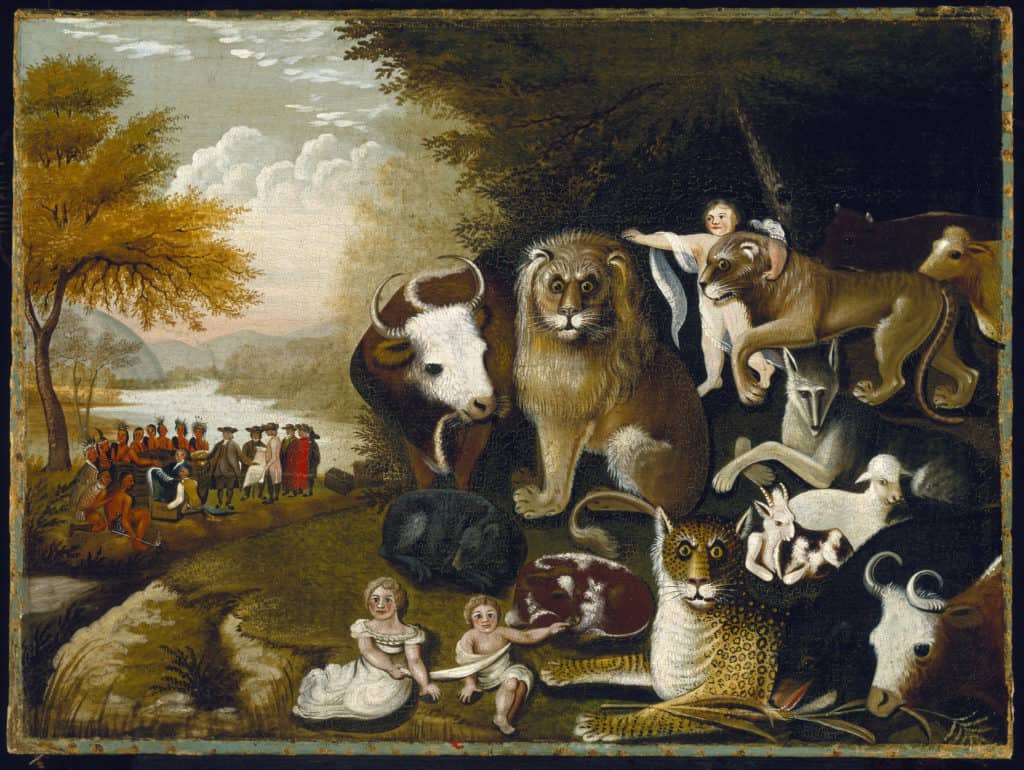
Still, even in this thoroughly idealized transformation of the cosmos, it is interesting and important to note that in one sense the vision is still rather “earthly.” Humans remain on the earth, however “renewed.” And indeed, Yahweh himself descends from heaven with his angels. His “feet stand on the Mt. of Olives,” and he becomes “king over all the earth,” dwelling in his perfect Temple forever (Zech. 14:4-9; Ezek. 43:6-7). The view that these texts begin to develop represents a kind of “compression” of the cosmos. In other words, the immortal heavenly realm above “comes down” to earth, and the world of death below is eliminated or “moved up” through resurrection. There is a certain sense in which this can still be seen, typologically at least, as linear or “historical.” Salvation here is eschatological. It comes at the end of history, through God’s dramatic intervention in the affairs of this world, as the new transformed age is inaugurated.
This is in contrast to views of the future that pictured salvation as taking place “away from the earth,” without any required end of history. I have in mind here the notion, particularly widespread during Greek and Roman times, of the immortal soul, leaving the body and the earthly realm at death, and obtaining immortal life in heaven above.
A GRECO-ROMAN TRANSFORMATION
As we move to the period of first Greek and then Roman domination of the eastern Mediterranean world (the fourth century B.C.E. to the first century C.E.), the biblical materials reflect drastic development with regard to the view of the future. All the ideas I have discussed so far–the older Hebrew view of the cosmos, the restoration of national Israel, and the transformed cosmos of the new age–continue, but they are fundamentally transformed and merged in rather complicated ways. Two views dominate: the hope of an eschatological transformation of the cosmos and the notion that an immortal soul escapes the body at death to enter the heavenly world. Both are closely tied to a deep despair regarding the course of history and the possibility of things ever changing. How and when might the many dreamlike promises of salvation for God’s faithful people, which I have just surveyed, ever be realized?
The Rise and Development of Apocalyptic Scenarios
One can find, as we have seen, the general outline of the major themes of Jewish eschatology in the Hebrew Prophets. However, such a general hope for change was apparently not enough to satisfy some of this period’s minority parties that were disenfranchised from the social, political, and religious establishment–groups that experienced real or imagined persecution. Increasingly we find evidence of a turn to some very definite apocalyptic schemes and scenarios. Apocalypticism focuses on the “signs of the end,” which have been revealed by God to his special “elect” or “chosen” ones. They alone understand the secrets of the cosmos, particularly the “times and the seasons” that will lead to God’s dramatic intervention.
The most important and influential apocalyptic work in the Bible is the Book of Daniel. Scholars date this text to near the time of the Maccabean revolt, c. 165 B.C.E. Chapters 2, 7, 8, 9, 11, and 12 contain visions that claim to show the sequence of events, in some detail, that will lead up to the time of the end, when God sets up his Kingdom over all the earth. The basic scenario is this: Following a succession of world kingdoms (Babylon, Persia, Greece, and Rome–as they were subsequently interpreted), a terribly evil ruler would come, march into Palestine, defile the Temple at Jerusalem, persecute God’s people for a limited time (about three and a half years), but be utterly and decisively crushed by the sudden intervention of God (Dan. 7:19-25; 8:23-26; 11:31-45). The resurrection of the dead and final judgment would follow, with the Kingdom passed to God’s elect and persecuted “saints” (see especially Dan 2:44; 7:13-18, 26-27). This basic scheme of events became enormously influential among Jewish and Christian groups of the period and is the backbone of all the major apocalyptic schemes in the New Testament. Each time a likely candidate showed up in Palestine–whether Antiochus Epiphanes (the original subject of the visions), the Roman general Pompey (63 B.C.E..), the threat of the emperor Caligula to have his statue placed in the Jewish temple (41 C.E.), or the actual destruction of the Temple in August of 70 C.E. by the Roman general Titus–the specific expectations of Daniel’s scheme came into play. Various groups of Jews and Christians would be whipped up into a kind of apocalyptic frenzy, utterly convinced that the time of God’s Kingdom was at hand.
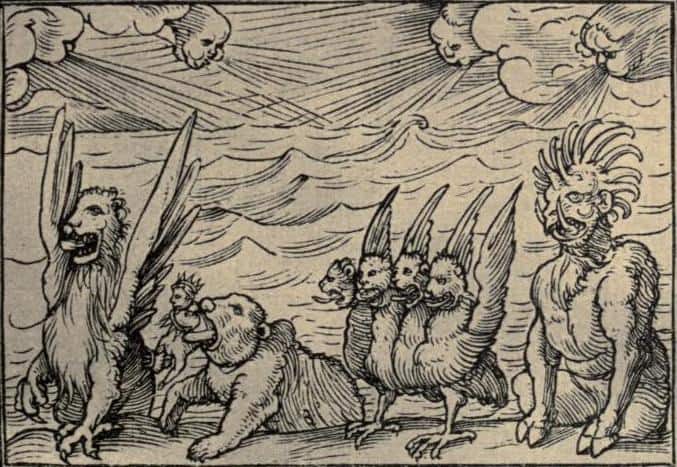
2 Esdras is another thoroughly apocalyptic work, which builds on the book of Daniel and is concerned with the “delay” of the end. [11] In a crucial section, 12:10-30, the author recasts Daniel’s basic vision and brings it down to his own time, with detailed predictions of what lies just ahead leading up to the arrival of the Messiah and the Kingdom of God.
Immortality of the Soul and Resurrection of the Dead
Side by side with the expanded speculation about when and how the end of the age would arrive are two important developments regarding the future of individuals beyond death. First, there is a vastly increased concern with the state and fortunes of the dead, both wicked and righteous, before the end of the age. Second, we see the full-blown development of the notion that some (or all) of the dead will rise to face a final judgment. As we have seen, in the Hebrew Bible the dead are in Sheol, barely existing, and never to return. The “state” of these dead is hardly any state at all. Daniel 12:2-3 is the earliest text in the Bible to speak clearly and absolutely about a resurrection of the dead, both wicked and righteous [12] His reference to the dead as “those who sleep in the earth” shows that he does not yet know, or share an interest in, their so called “interim” state (i.e., before the resurrection at the end). 2 Maccabees (written sometime between the first century B.C.E. and the first century C.E.) reflects an interesting state of development in this regard. Not only does the author believe in the resurrection (at least of the righteous martyrs), but he advocates prayer and sacrifice for the dead and believes that they can intercede for those on earth and vice versa (2 Macc. 12:43-45, 15:11-16). Likewise, in 2 Esdras the dead are fully conscious, already suffering either punishment or comfort in various levels and compartments of the heavenly realms, awaiting the final day of judgment (2 Esd. 7). Here the view of the immortal soul that departs the body at death is combined with a view of final and future resurrection of the dead. We know from texts outside the Old Testament canon, like the Ethiopic Enoch (third century B.C.E. to first century C.E.), that such views were common among various Jewish and Christian groups during this period. The Wisdom of Solomon is most interesting in this regard. In chapter 2, we have a powerfully poetic description of the ancient Hebrew view of death:
Short and sorrowful is our life,
and there is no remedy when a man comes to his end, and no one has been known to return from Hades. Because we were born by mere chance, and hereafter we shall be as though we had never been; because the breath in our nostrils is smoke, and reason is a spark kindled by the beating of our hearts. When it is extinguished, the body will turn to ashes, and the spirit will dissolve like empty air. Our name will be forgotten in time, and no one will remember our works. (2:1-4)
This is precisely the view of Ecclesiastes, as we have seen. But here the author of The Wisdom of Solomon attributes this view to the grossly wicked (Wisd. of Sol. 2:21-24)! He strongly supports a view that is the very opposite of Ecclesiastes, that of the immortality of the soul and resurrection of the dead. He declares:
But the souls of the righteous are in the hand of God, and no torment will ever touch them. In the eyes of the foolish they seemed to have died, and their departure was thought to be an affliction, and their going from us to be their destruction; but they are at peace. For though in the sight of men they were punished, their hope is full of immortality. (3:14)
He goes on to declare that in the time of their visitation they will “shine forth” (be resurrected?) and will end up governing and ruling nations in the Kingdom of God (3:7-8).
VIEWS OF THE FUTURE IN THE NEW TESTAMENT
The general view of the future found throughout the New Testament incorporates and builds upon most of these developments and changes. The ancient Hebrew views, which are so dominate in the bulk of the Hebrew Bible, are simply ignored, or they are read and interpreted in the light of the newer views.
The Resurrection of the Dead
Perhaps it is only too obvious that the idea of a resurrection of the dead has a central place in the New Testament documents. Nowhere in the New Testament do we find reflected or upheld the old Hebrew idea of death as the final end. In fact, in several places this idea is directly opposed. In the Synoptic tradition, the Sadducees, who held such a view of death, challenge Jesus, and he sharply refutes them, arguing for some kind of continued existence after death as well as a future resurrection (Mark 12:18-27). In the Book of Acts, Paul too makes a point of distinguishing his faith in resurrection of the dead from the view of the Sadducees (Acts 23:6-10).
Still, what these early Christians meant by the idea of “resurrection” is not always so clear. Take the case of Jesus. In Luke 24, he appears after his resurrection to have a normal physical body; he eats and drinks and presumably exercises all bodily functions, just as before his death. So we seem to have here the notion of the resuscitation of a corpse, i.e., the same physical body of Jesus, wounds and all, that was laid in the tomb (see John 20:24-27, 21:9-14). Yet this body comes through locked doors (John 20:19), and Paul defends the idea of some kind of a “spiritual body,” definitely not “flesh and blood,” but immortal and glorified. What connection this “spiritual body” is supposed to have with the body put in the tomb is not clear (l Cor. 15:42-54). Resurrection, however, throughout the New Testament, is at the end, when Jesus returns with the clouds of heaven to gather his elect people together (Luke 20:34-36; Matt. 11:20-24; John 5:28-29; Acts 24:15; 1 Thess. 4:15-17; 1 Cor. 15:51-52; 2 Tim. 4:1; Rev. 11:18). (There are exceptions: Jesus and the Saints of Matthew 27:52f., as well as the dead raised by Jesus and Paul.)
As for the “state of the dead” before the end, Paul prefers the image of “sleep” (1 Cor. 15:6, 18, 20, 51; 1 Thess. 4:13-18; 5:9-10). But he also believed that the “spirit” of a departed Christian went to “be with Christ” (Phil. 1:19-26; 2 Cor. 5:6-10; 1 Thess. 4:14). Several places in the New Testament we clearly find the notion that the dead are conscious, dwelling somewhere in the heavenly realms beyond, and awaiting, either in torment or comfort, the final judgment (Luke 16:19-31, 23:43; 1 Pet. 3:18-20; 4:6; Rev. 6:9-1 l; 7:9-12).
The Close of the Age
The early Christians believed in the “close of the age”–and also what might properly be called the “end of the world.” They looked to a future, following the return (parousia) of Jesus in the clouds of heaven, in which the physical world would “pass away,” replaced by a new creation (Rom. 8:21; 2 Pet. 3:10-13; Rev. 21—22). Here, is it difficult to lay out a single eschatological scheme for all the New Testament documents. Revelation, chapter 20, speaks of a thousand-year reign of Christ on earth before the “new creation” (see Rev. 1:6; 2:25-26; 3:21; 5:10; 11:15-18). Paul seems to anticipate such a time, between the coming of Christ and the final “end” (Telos), when the elect group will “judge the world . . . and angels” and reign as kings in the kingdom of God (1 Cor. 15:23-28; 4:8; 6:2-3). The author of Luke through Acts speaks of Christ coming back to “restore” all the things spoken by the prophets (Acts 3:20-21), and Jesus chooses twelve disciples to rule over the re-gathered twelve tribes of Israel in the Kingdom of God (Luke 22:28-30). This rather “literal” or concrete view of the Kingdom of God on earth, drawn from the Hebrew Prophets, appears often in the Synoptic tradition. Jesus will return to earth and sit on his glorious throne, surrounded by his twelve ruling apostles, over the twelve tribes (Matt. 19:28-30). All the Old Testament patriarchs will be resurrected and participate in this Messianic kingdom (Matt. 8:11-12). The nations will be gathered before this throne of Christ and judged (Matt. 25:31-46). Whether all this can be fully systematized or not, Revelation, chapters 19-22, does contain the key elements of this overall vision of the future in some kind of rough order: the return of Christ, the utter defeat of Satan and his agents; the resurrection of the dead and the reign with the saints on earth; a return of Satan to lead the nations against Jerusalem; their defeat and the immersion of the Devil and the false prophet in a lake of burning sulfur for eternal torment; a final resurrection and judgment; and the new creation and final perfection. Most New Testament passages on the future will fit somewhere into this general scheme. And most of the themes cited earlier from the Hebrew Prophets anticipate one part or another of this final New Testament eschatological outline.
Signs of the End
Any actual apocalyptic scenario, when reflected here and there in the New Testament, seems to be remarkably consistent with the visions of Daniel. In the Synoptic tradition (Mark 13; Matt. 24; Luke 21) Jesus connects the destruction of the Jerusalem Temple to the more general “signs of the end of the age”: false prophets, wars and disruptions, earthquakes, famines, pestilence, persecution, and a world-wide proclamation of his message. These then lead up to “the sign,” spoken of by Daniel the prophet as the desolating sacrilege (“abomination of desolation”), apparently some kind of profanation of the Jewish Temple rites (Dan. 8:13-14, 9:27; 11:31), This is followed immediately by the greatest time of tribulation in history (Dan. 12:1-2), which in turn ushers in the disruption of the cosmos (“heavenly signs”) and the return of Christ. The scheme is very tightly connected, and Jesus declares at the end that “this generation will not pass away until all these things are fulfilled” (Mark 13:30). Those words alone must have had a tremendous impact on the expectations of the Christian communities that lived through the Jewish-Roman war (unless they were made up during it). Remarkably, the same scenario occurs in Revelation, chapter 6, with the opening of the “seven seals” of the apocalyptic book, and the further details in Revelation, chapter 11, regarding the three and a half years during which the Temple is defiled by the Gentile “beast” power. [13] We get more of this kind of interpretation in the second chapter of 2 Thessalonians; where Paul (or one of his followers) says the Day of the Lord cannot come until this wicked ruler, who profanes the Temple, arrives on the scene. This is a remarkable example of just how literally Daniel l l:31ff. was taken by Christian groups.
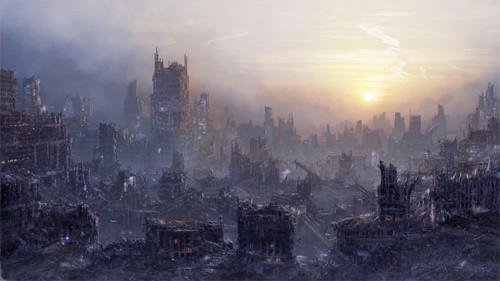
This means that besides the more general schemes of Hebrew Bible eschatology, and along with the specifics about resurrection of the dead, early Christians were actually watching world events, including political figures and troop movements in the Palestine area, with an eye on Daniel 11:35-12:1. After the scare of 41 C.E. (when it appeared that Caligula would literally fulfill Daniel’s predictions by putting his own statue in the Jewish Temple), and the terrible war of 66-70 which resulted in the utter destruction of the Temple–but no return of Christ–it is likely that this kind of apocalyptic fervor began to wane. We see a very general scheme, complete with an exhortation not to scoff or give up on the end-of-the-world hope, in the third chapter of 2 Peter, one of the latest documents of the New Testament. Here, we have a view of the future that can take one ahead several millennia–and it would serve the Christians well. The writer declares that “one day with the Lord is as a thousand years” (2 Pet. 3:8).
Earliest Christianity is often described as a Jewish apocalyptic sect (“end-of-the-world movement”), which, drawing upon Daniel and the Hebrew Prophets, pinned its hopes and dreams of the future on the catastrophic events before, during, and after the Jewish War. What they most expected to happen never came–the return of Jesus on the clouds of heaven to usher in the Kingdom of God. What they least expected to happen was what in fact did happen: the utter demise of the Jewish state and the increasing power and stability of Rome over the next several centuries. The fact that Christianity survived these disappointments suggests that its center was not solely apocalyptic expectation, but there is no denying that such expectation was central to the earliest movement.
What is most remarkable about all these images and views of the future, taken from all parts of the Bible, is their amazing flexibility. They were, and continue to be, applied to all kinds of situations and circumstances, always shaping the way readers ask and answer some of their most profound questions.
NOTES
6. The main passages are Isaiah 2:2-4, 11:1-12; 27:12-13, 35, and 66:18-24; Jeremiah 3:15-25; 16:14-21; 23:1-8; and 30.31; Ezekiel 11:14-21, 34:11-31, 36:8-38, 37, and 40-48; Hosea 1:10-11; 2:16-23, and 3:1-5; Joel 3; Amos 9:9-15; Micah 5; Zephaniah 3; Haggai 2; Zechariah 10:6-12 and 12-14.
7. This idea of a royal agent of Yahweh, an ideal descendant of David, is linked to various passages in the Psalms (mainly Psalms 2 and 110) that speak of divine priesthood and sonship. All these (King, Priest, and Son) later go into the idea of a heavenly Messiah arriving and bringing about the Kingdom of God.
8. This important section of Isaiah (24-27) is often called the “Isaiah Apocalypse,” and it was apparently written much later than Isaiah’s time (eighth century B.C.E.). It is one of the earliest examples of apocalyptic material in the Hebrew Bible.
9. There are dozens of passages describing this “great and terrible Day of Yahweh.” Some are: Isaiah 2:12-22; 13:9-13; 24; 59:15-19; 63:3-6; and 66:15-16; Jeremiah 25:30-33; Ezekiel 38-39; Joel 2:1-11 and 3:9-15; Zephaniah 1:2-18 and 3:8-13; and Zechariah 14.
10. Unlike the New Testament, the Hebrew Bible does not contain the developed view of a powerful Satan with wicked rebellious angels set in opposition to God. These ideas apparently began to develop in the late Persian period. A hint of the beginning may appear in this late text of Isaiah. The only other book in the Hebrew Bible that contains anything like this is Daniel (written in the second century (B.C.E.). In later times, texts such as Isaiah 14:12-14 and Ezekiel 28:11-17 were understood to refer to Satan and his original rebellion against God.
11. The composition and textual transmission of 2 Esdras is extremely complicated. The central portion (chapters 3-14) were probably Jewish, written in the first century, but it now contains Christian interpolations, which were composed at a later date.
12. It is not entirely clear whether Isaiah 26:19 and Ezekiel 37 should be taken as literal references to resurrection of the dead. The latter might be a kind of parable for the re-gathering of the twelve tribes of Israel.
13. For this reason I think it is likely that the Book of Revelation, at least in these sections, was composed under Nero, as the Jewish-Roman war was breaking out.







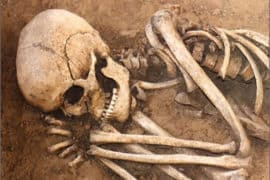
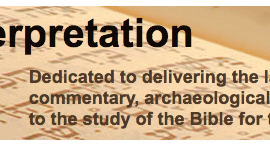
Comments are closed.